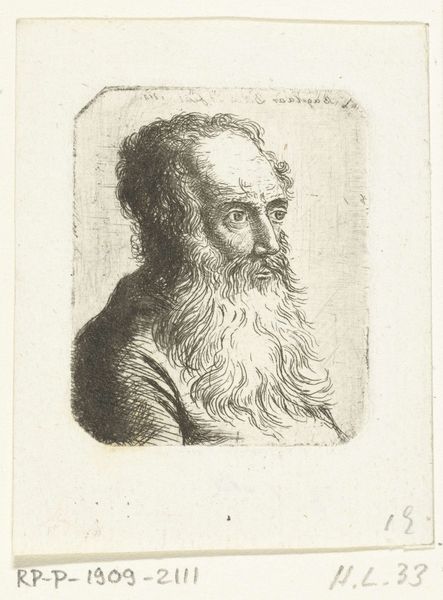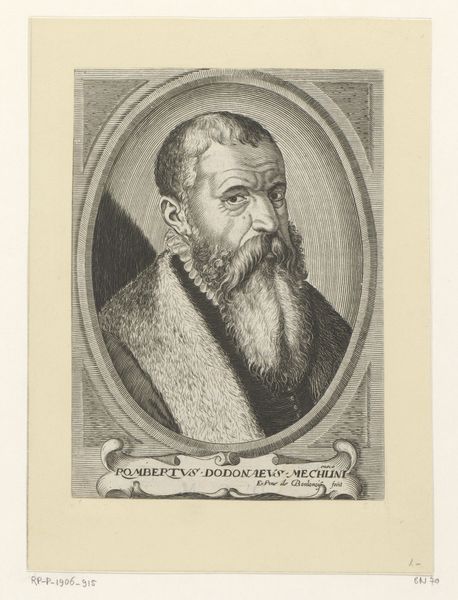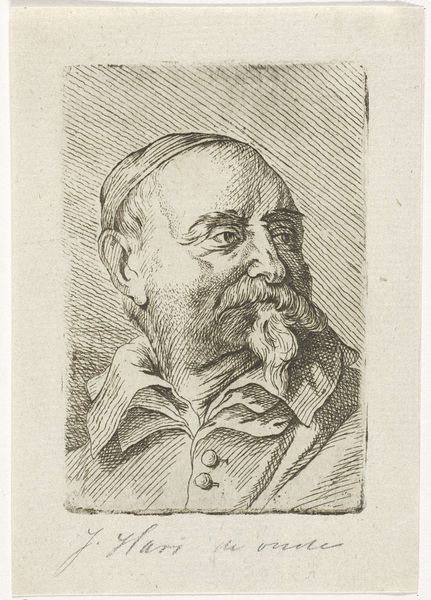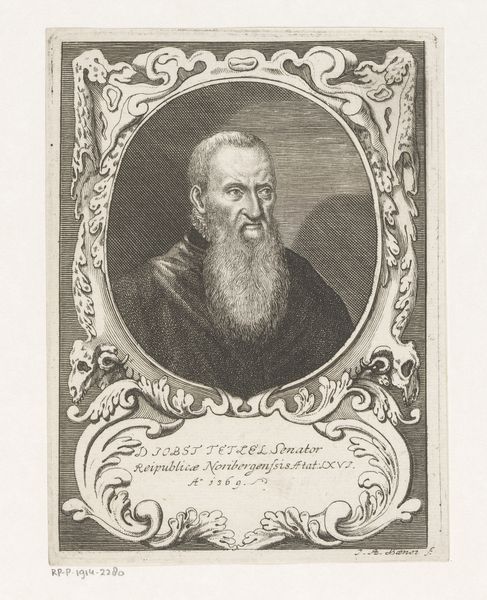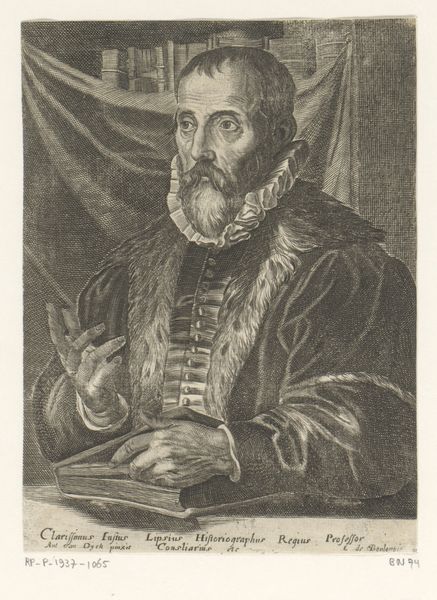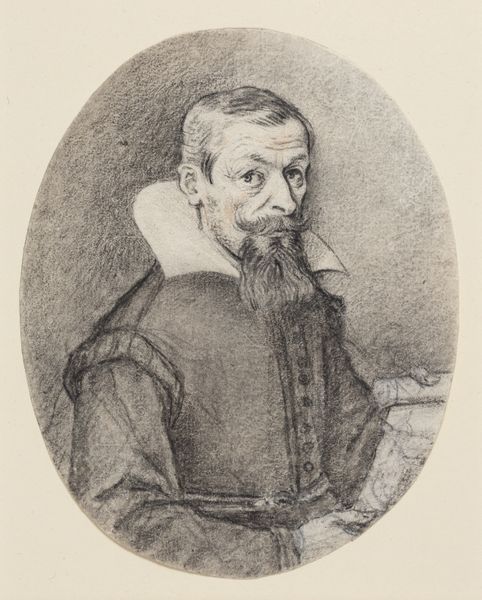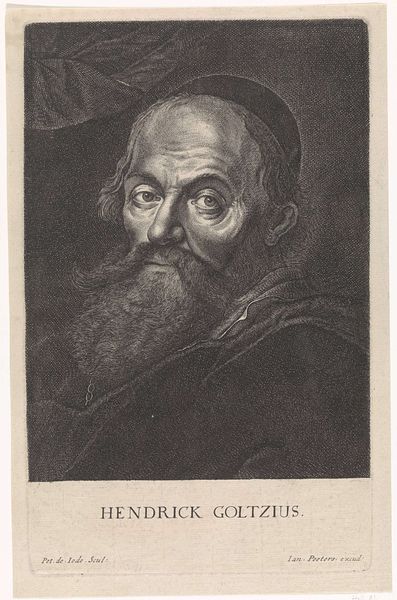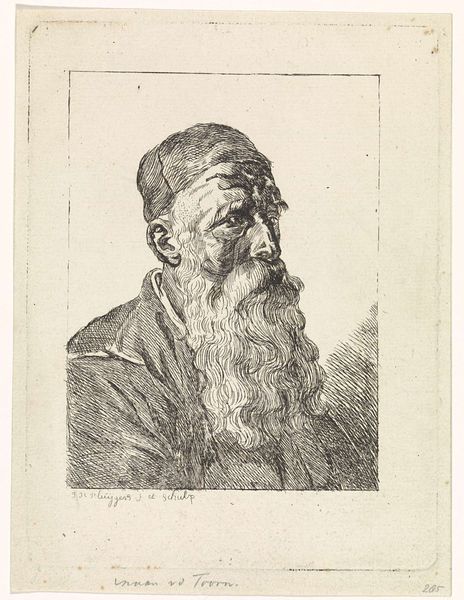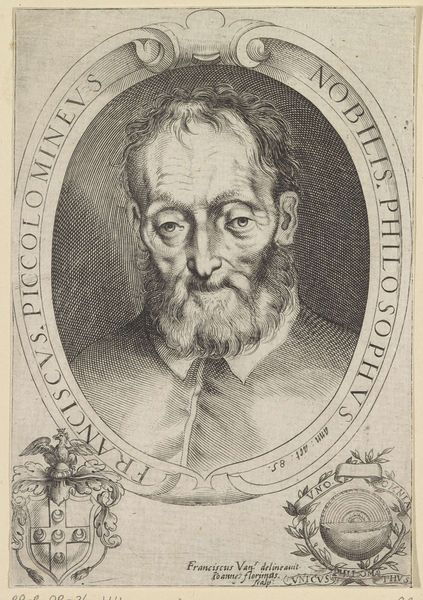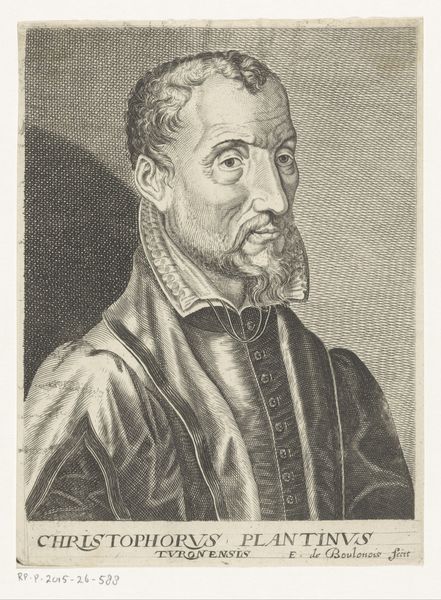
Dimensions: height 119 mm, width 85 mm
Copyright: Rijks Museum: Open Domain
Editor: This is a print titled "Portret van kunstenaar Hendrick Goltzius" created sometime between 1750 and 1817 by Joseph Meurer. It's an engraving of a man with a distinguished beard, framed in an oval. I'm struck by how this image seems to embody a sense of history and importance, despite its small size. How do you interpret this work? Curator: This portrait resonates within a complex web of historical and artistic identity. Think about the very act of portraying an artist, especially one as influential as Hendrick Goltzius, well after his time. What does it mean to reproduce an image, to disseminate it through print? It speaks to power, doesn't it? Editor: Power? In what way? Curator: This is more than just an image; it’s a constructed legacy. Consider the socio-political implications: who gets remembered, and how? This print, made long after Goltzius' death, functions as a tool for solidifying his position in the art historical canon. The choice to employ the baroque style adds another layer, imbuing the image with a sense of grandeur and authority, and the artist situates himself with an older tradition of representation. Do you think Meurer wanted to assert Goltzius's influence or perhaps signal his own place within the artistic lineage? Editor: So, it's not just a portrait, but an argument about art history itself. The way you contextualize it really sheds light on its social purpose. It’s interesting how even seemingly straightforward images can be interpreted through so many different lenses. Curator: Precisely! And these lenses – be they historical, social, or theoretical – allow us to engage more deeply with the narratives embedded within the art, questioning who has the power to write and visualize history, and whose stories get told. What does it mean to carry those histories into today, too?
Comments
No comments
Be the first to comment and join the conversation on the ultimate creative platform.
